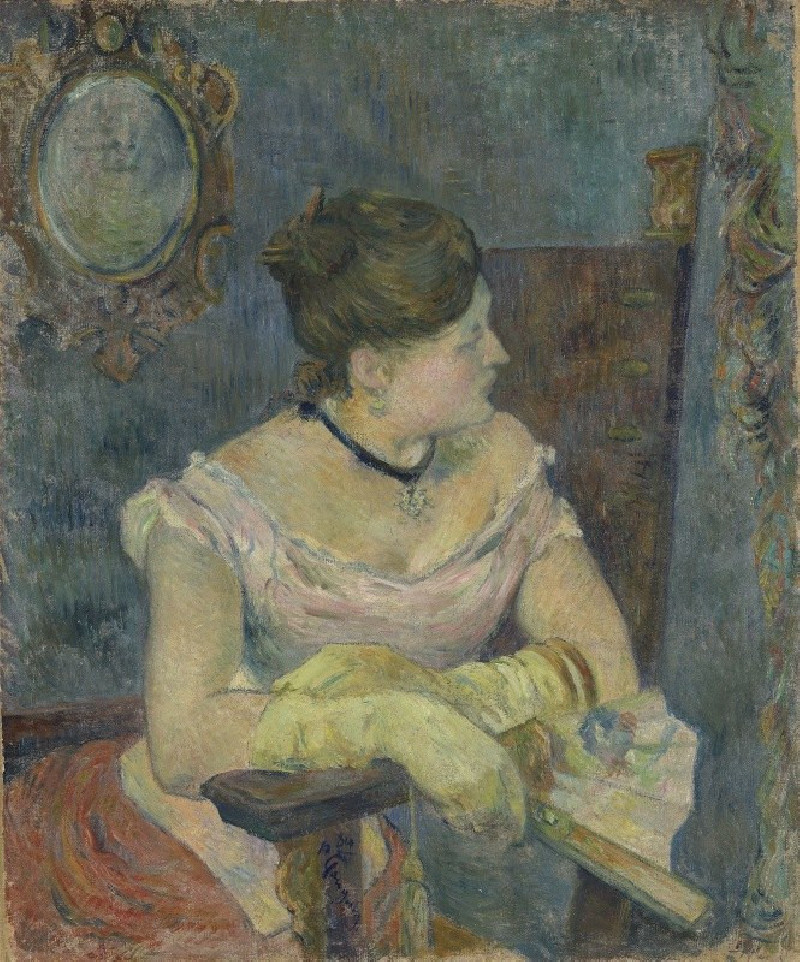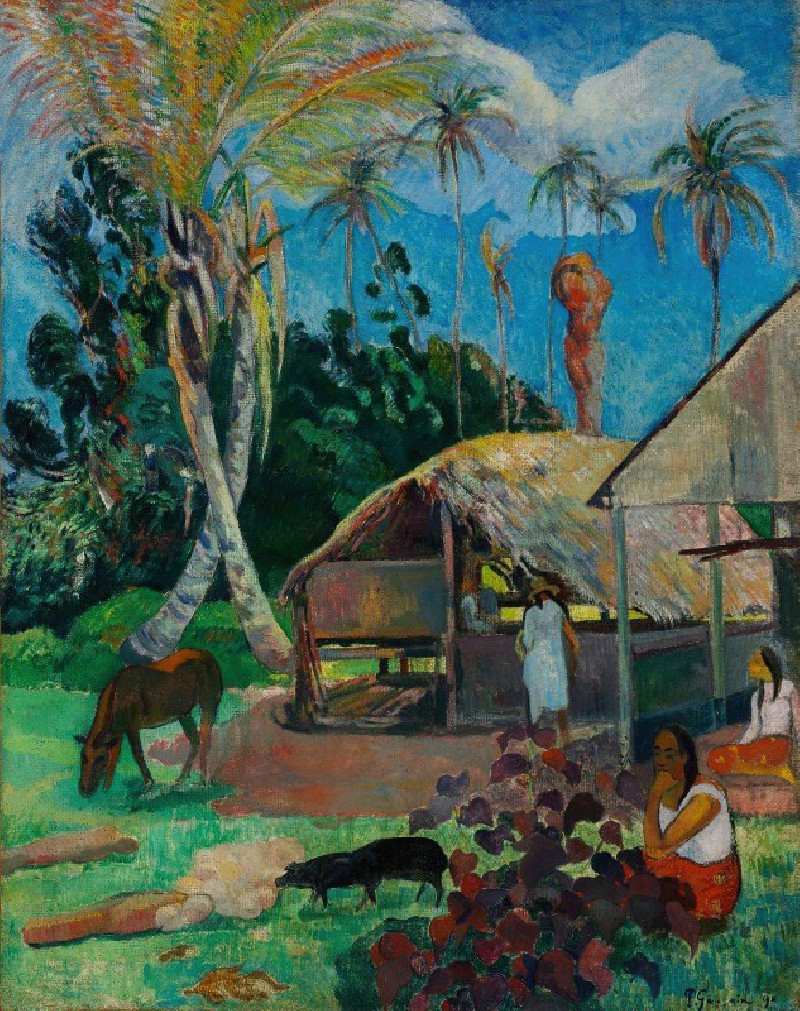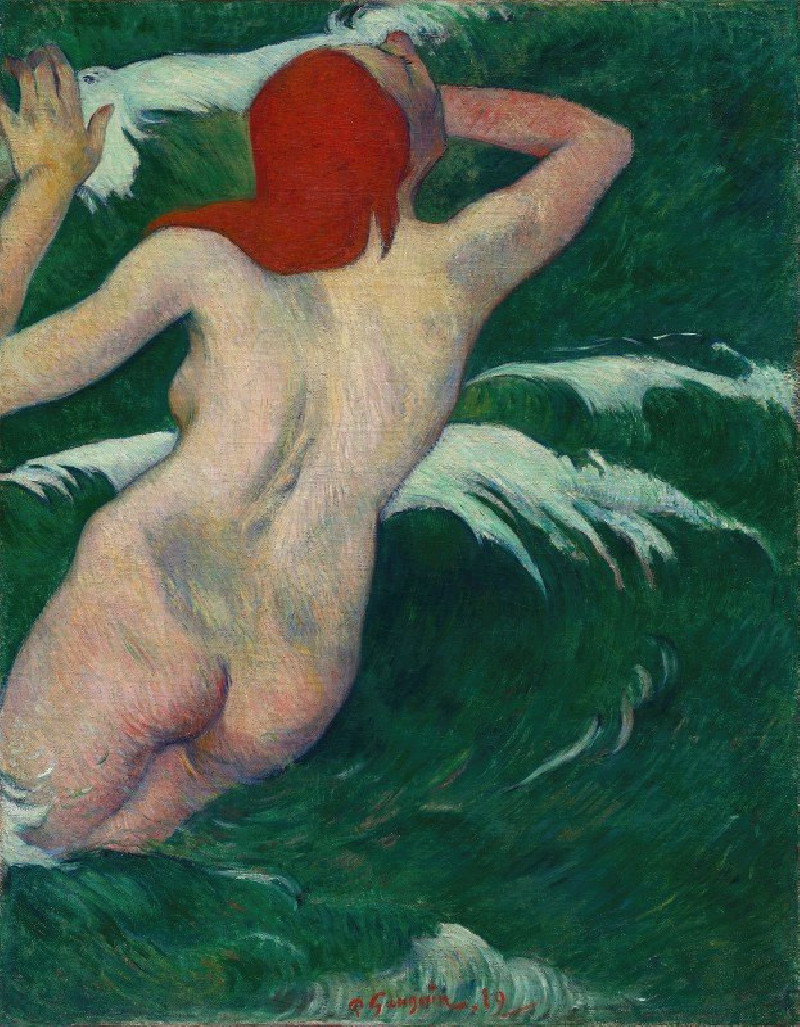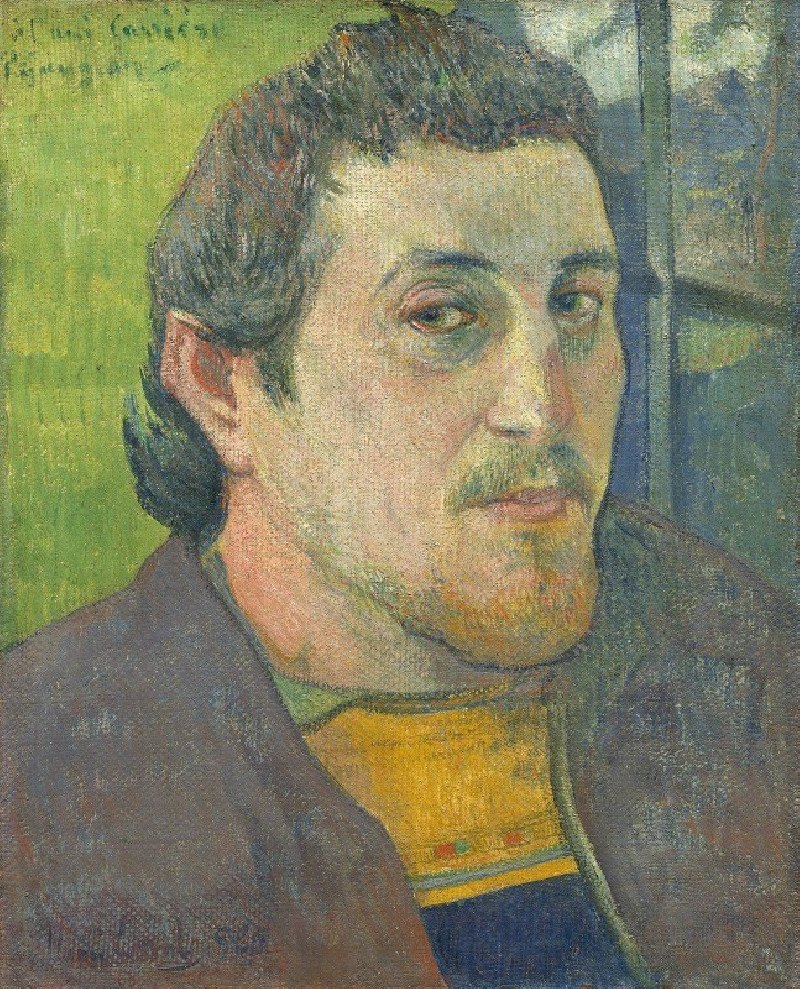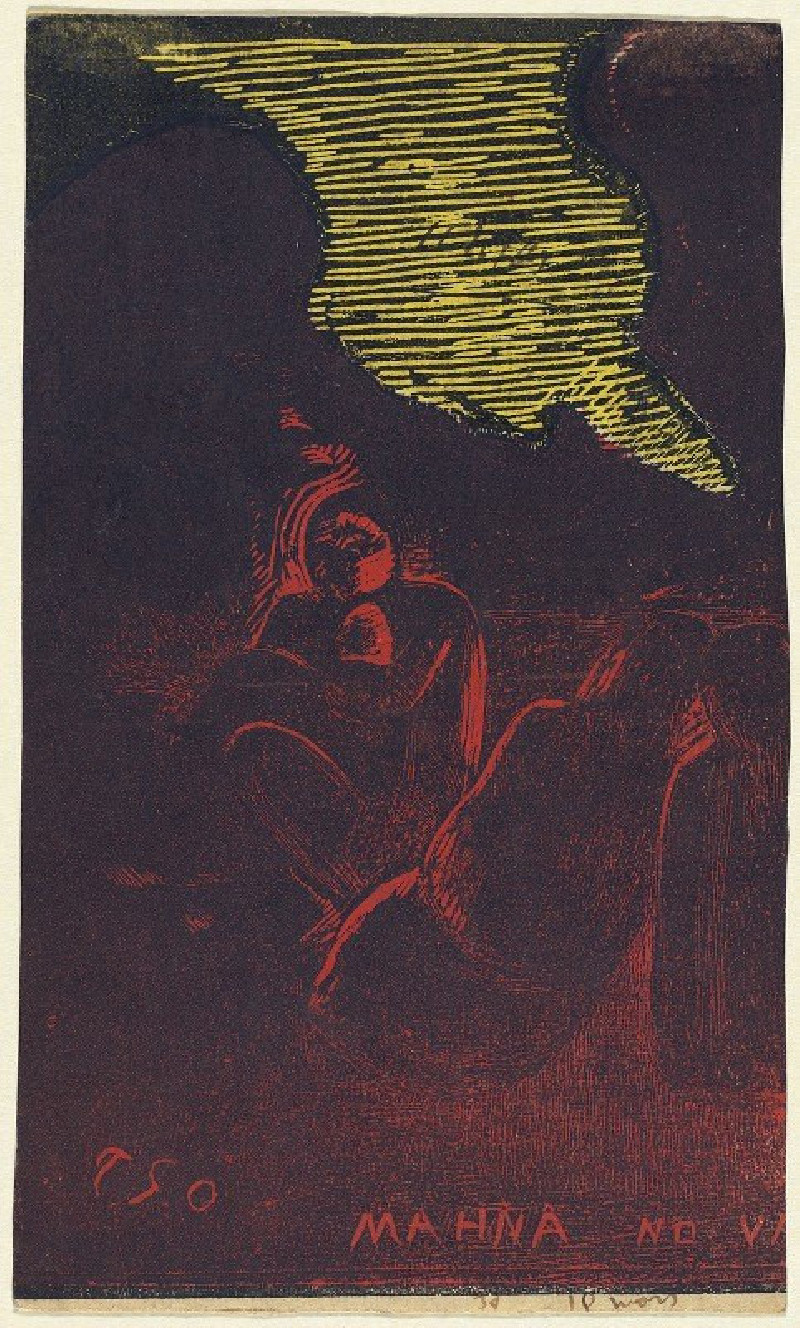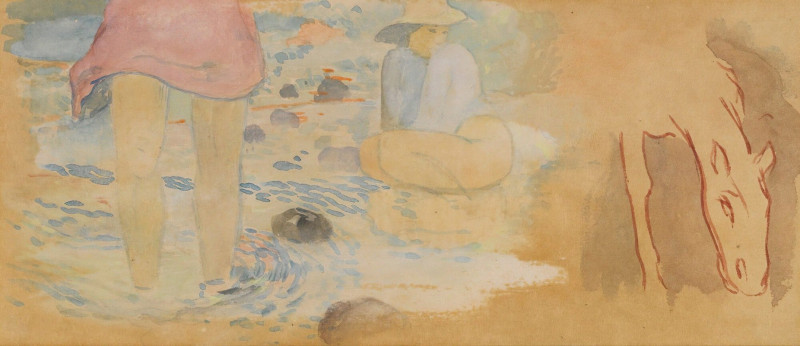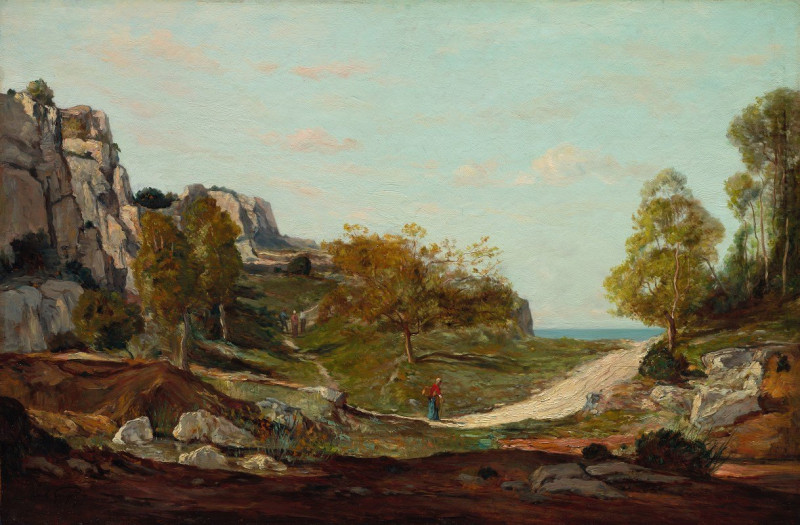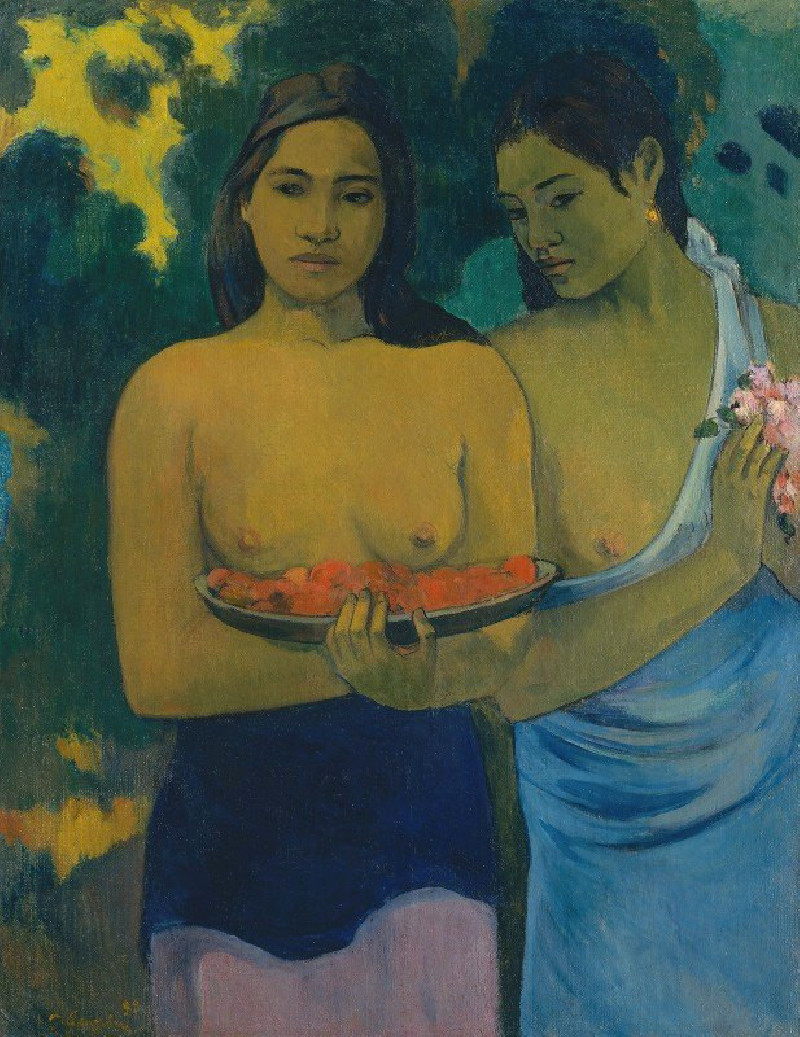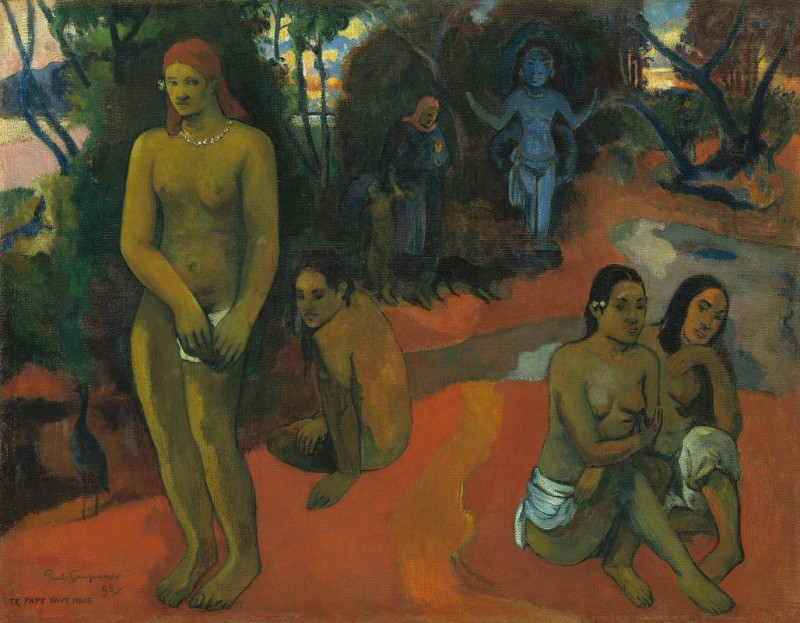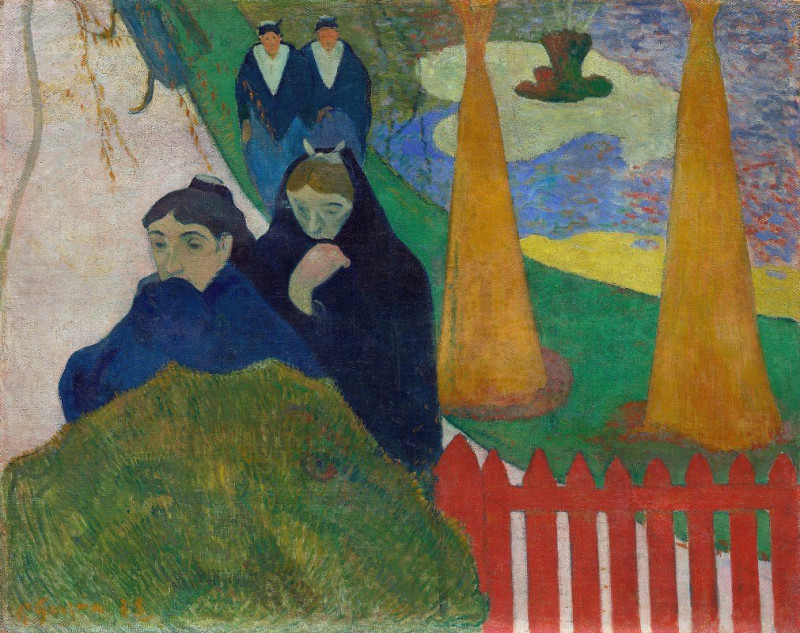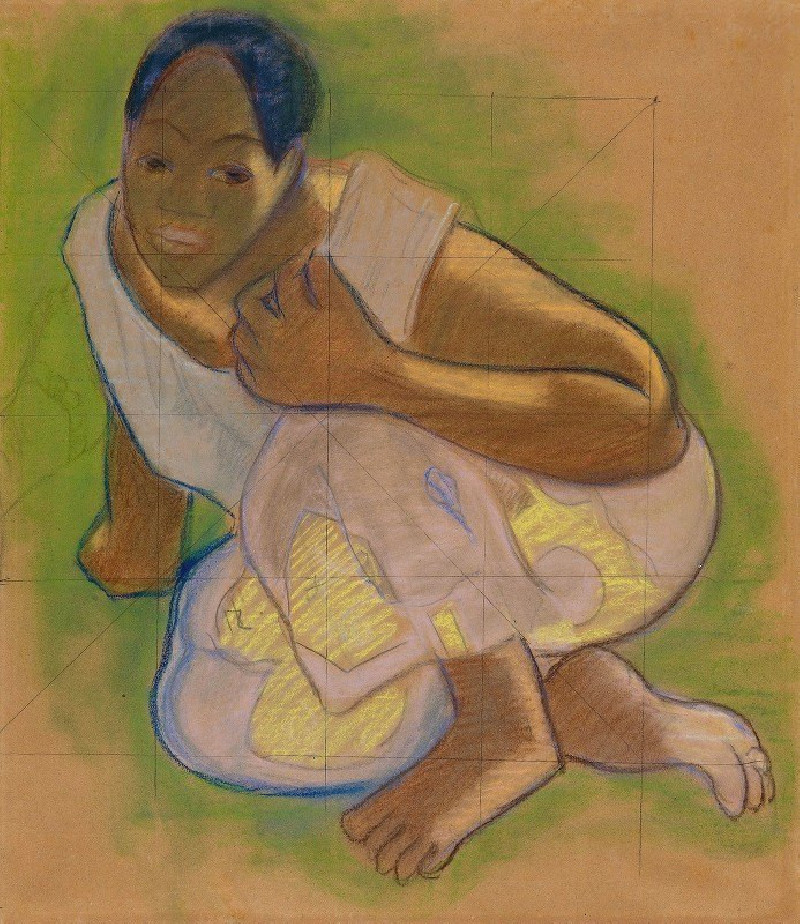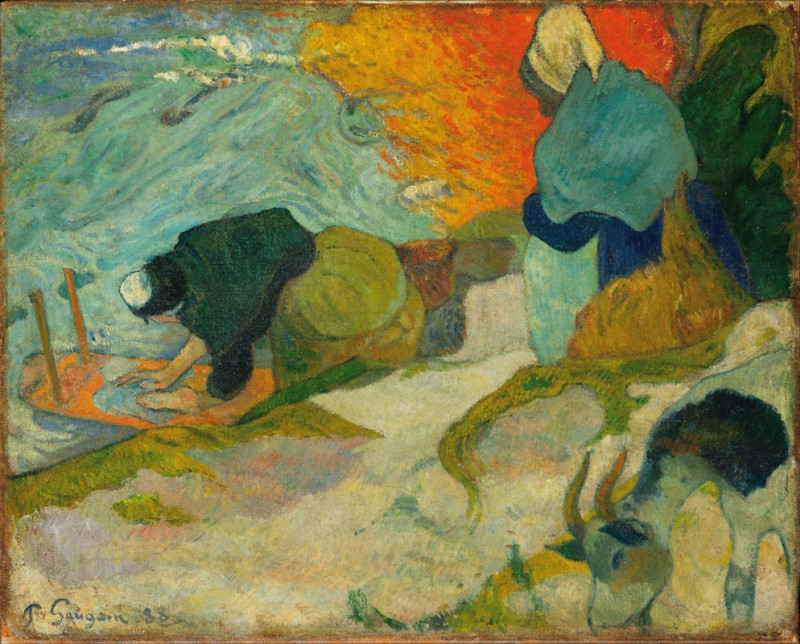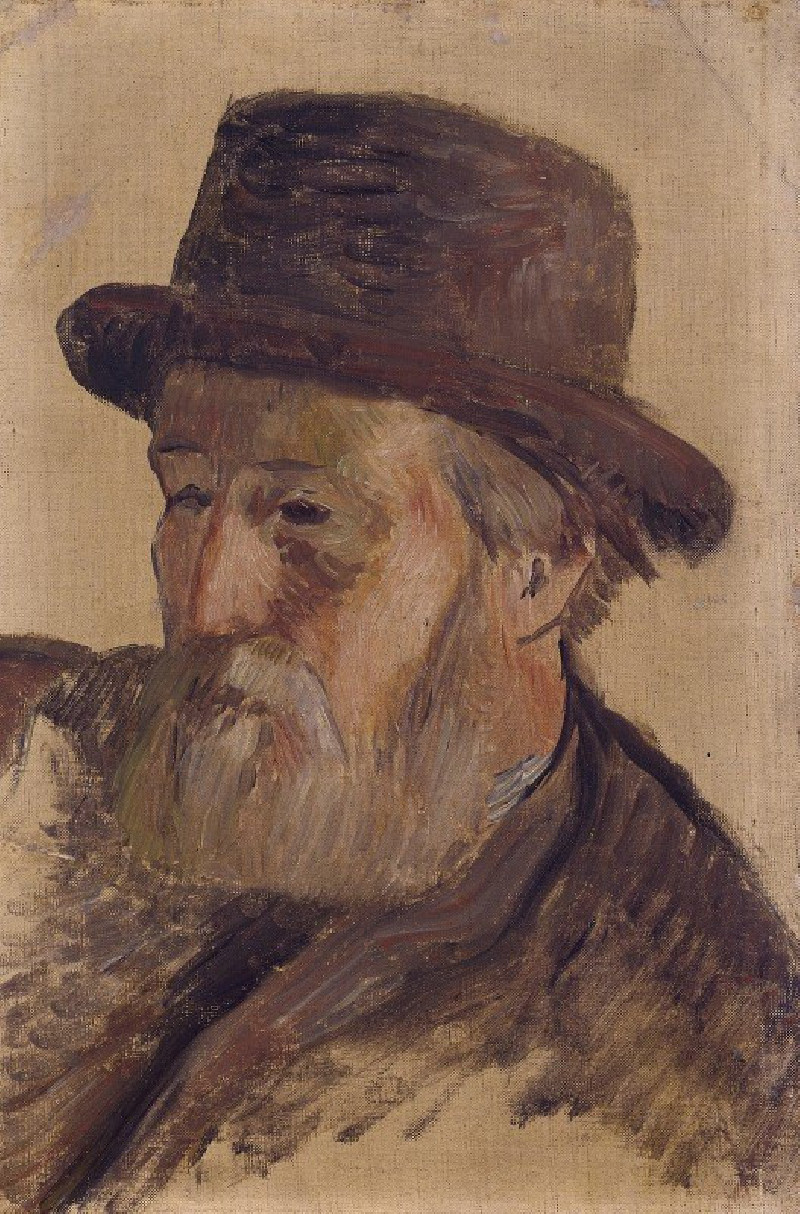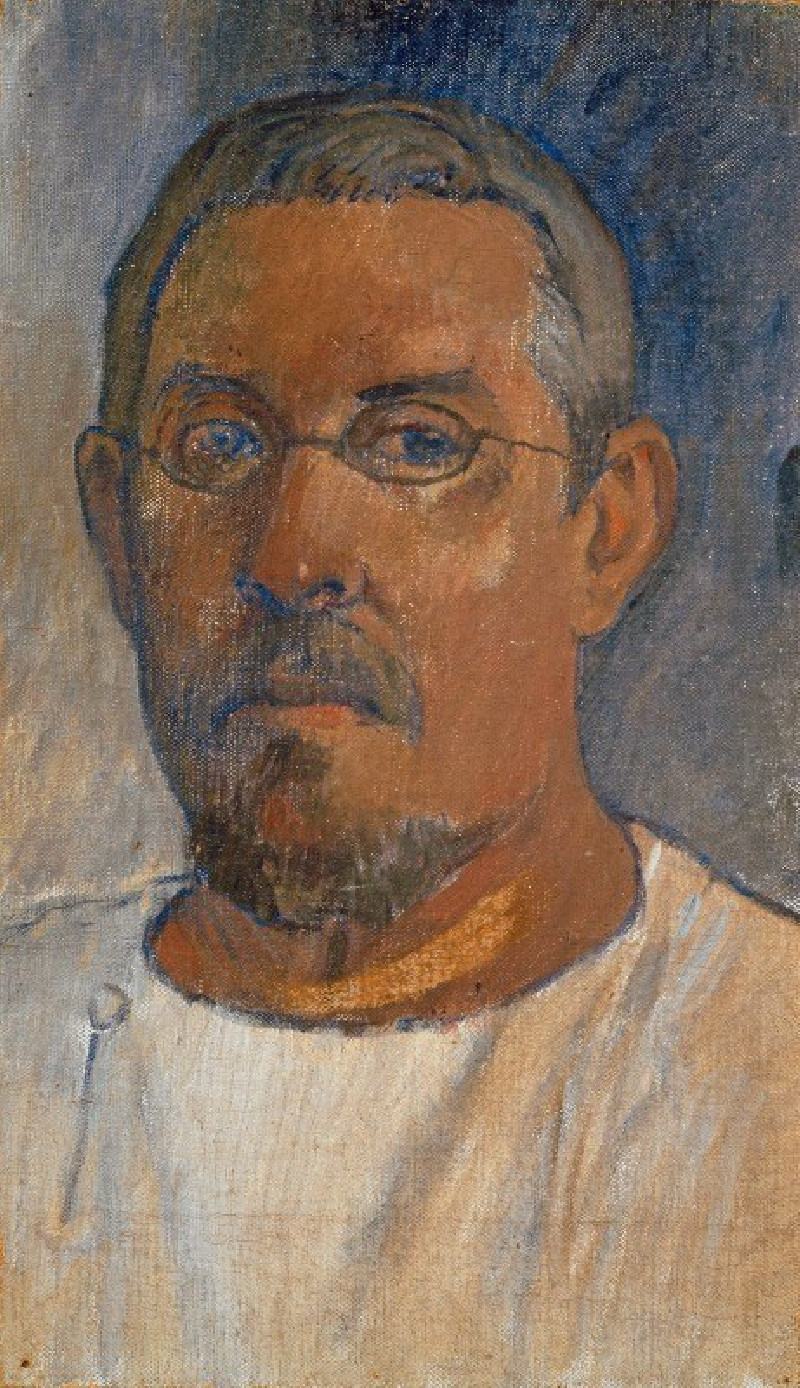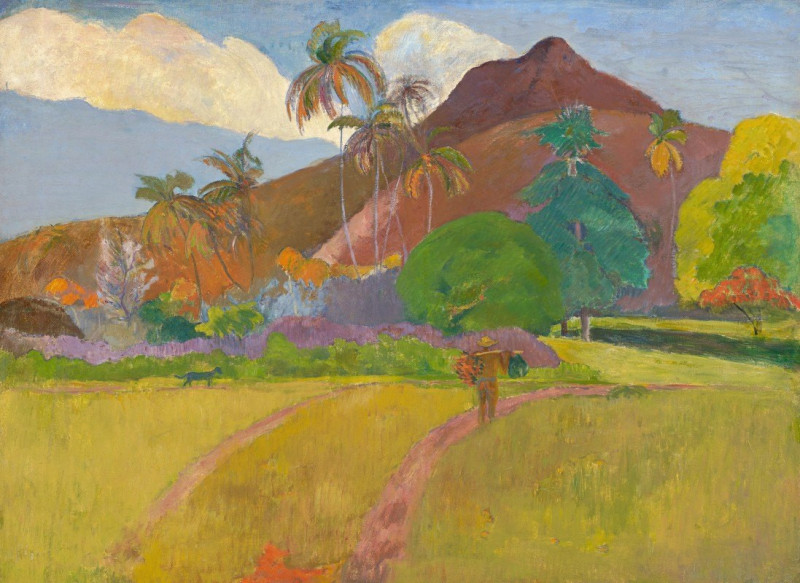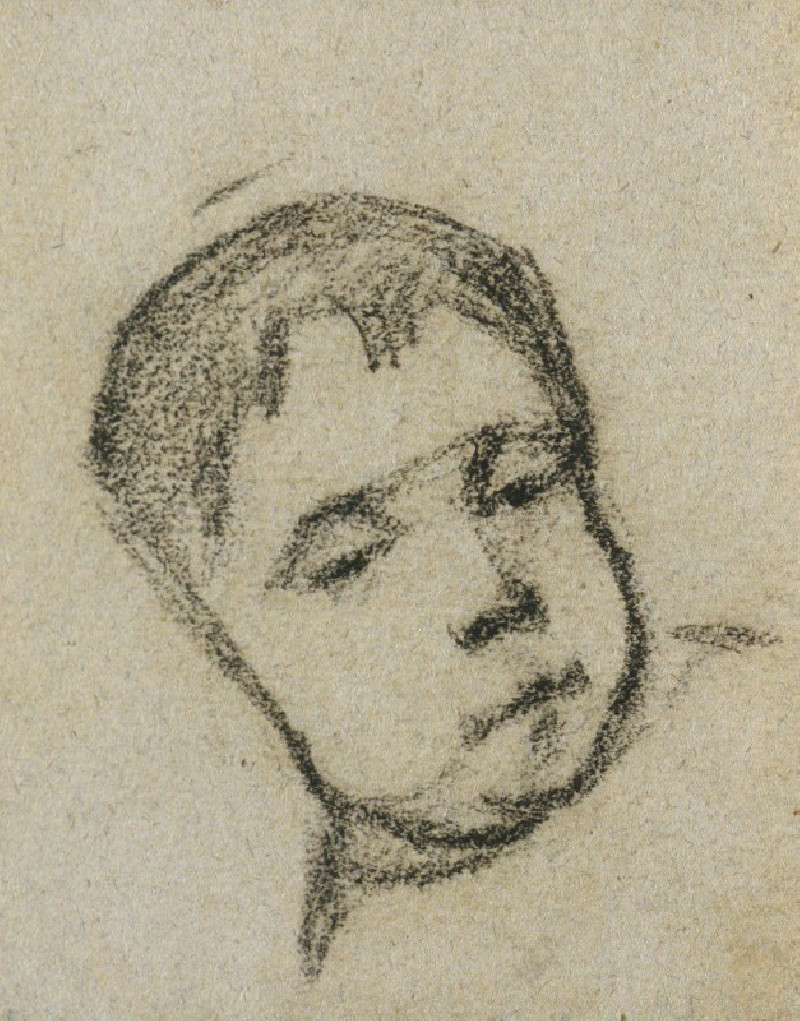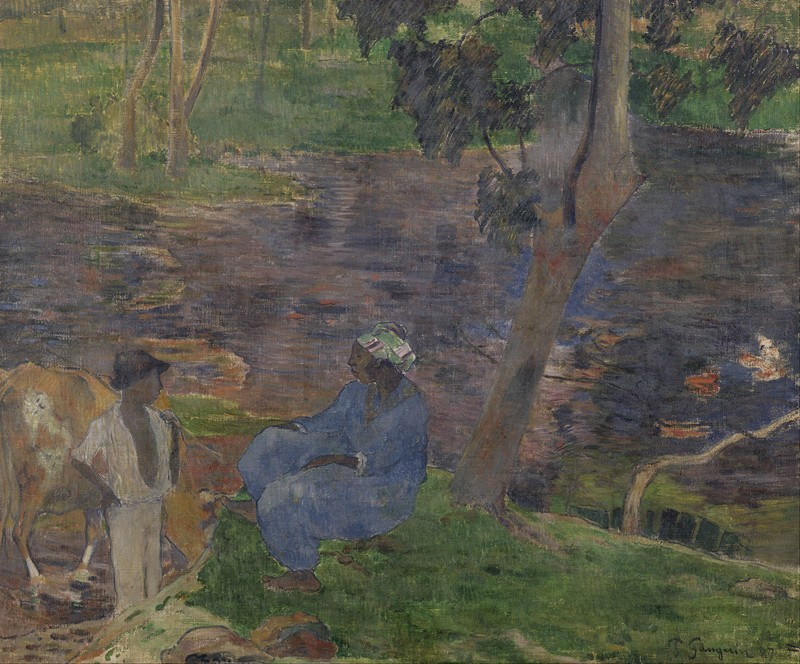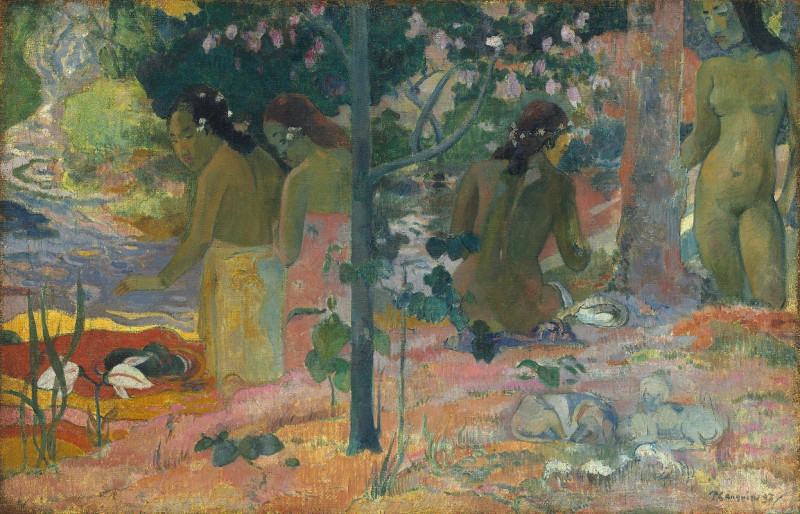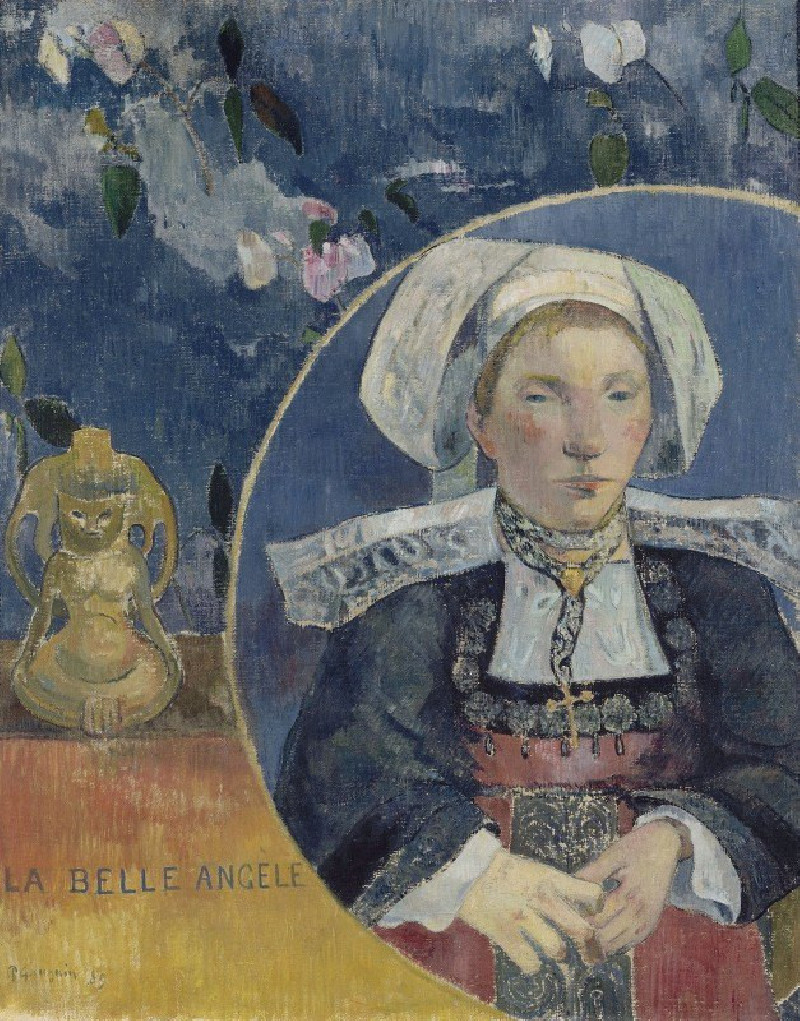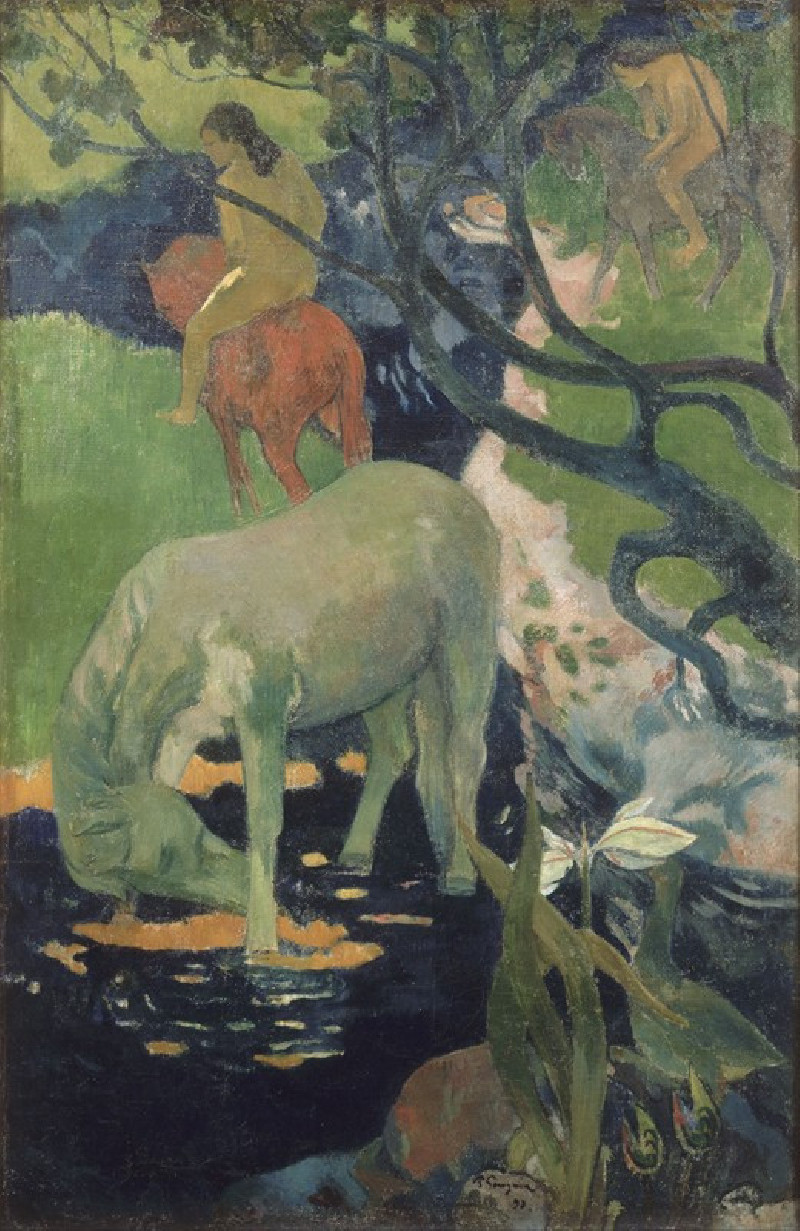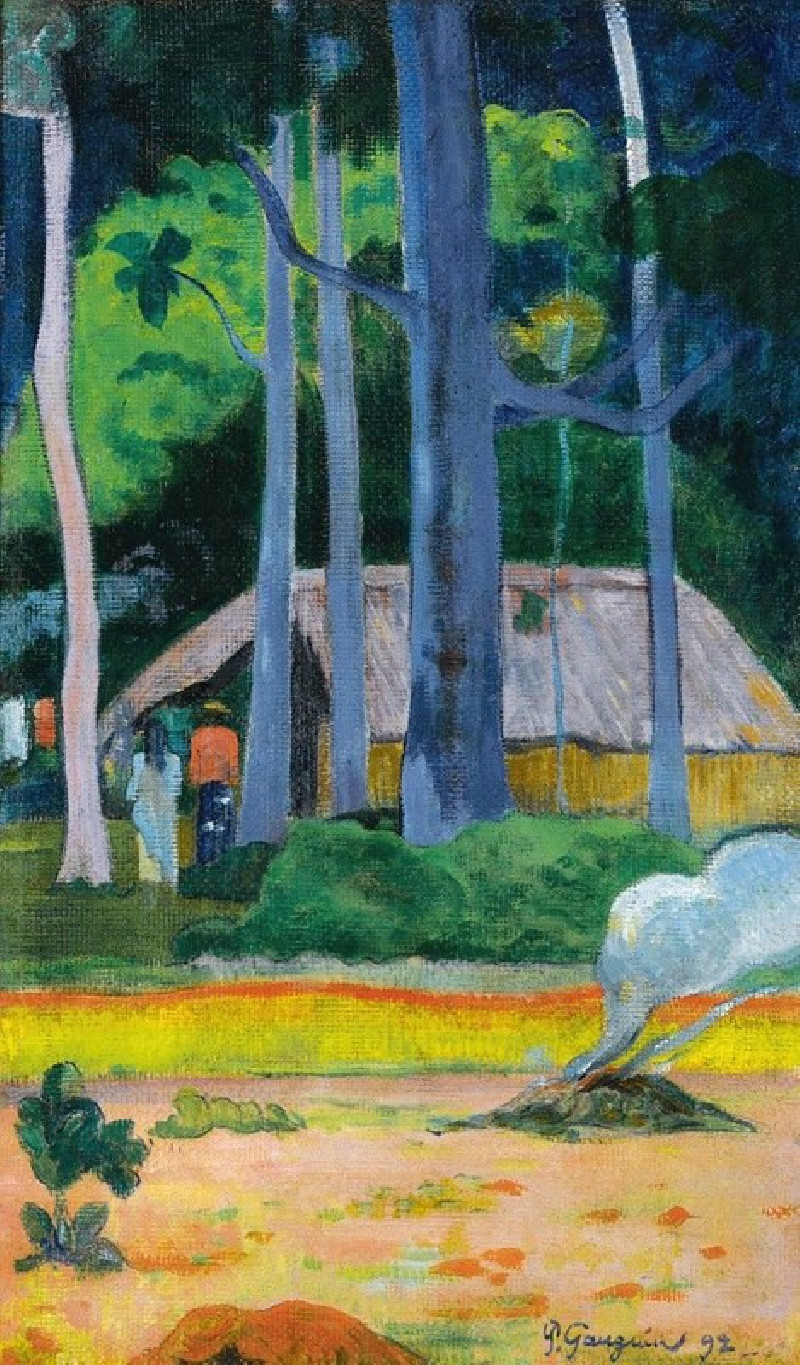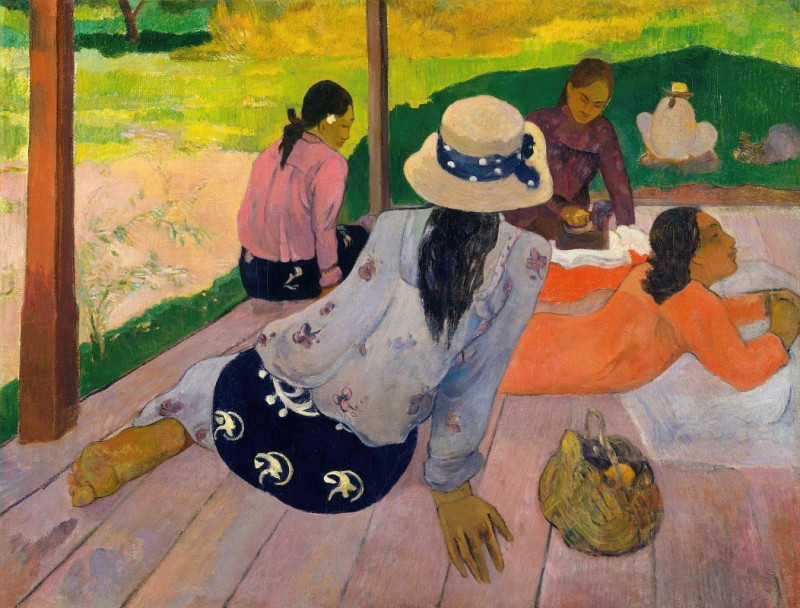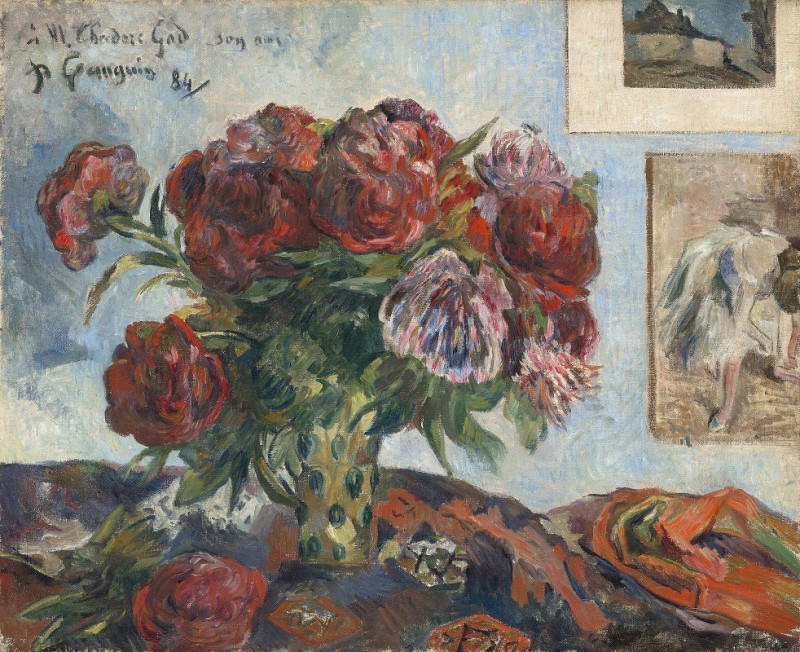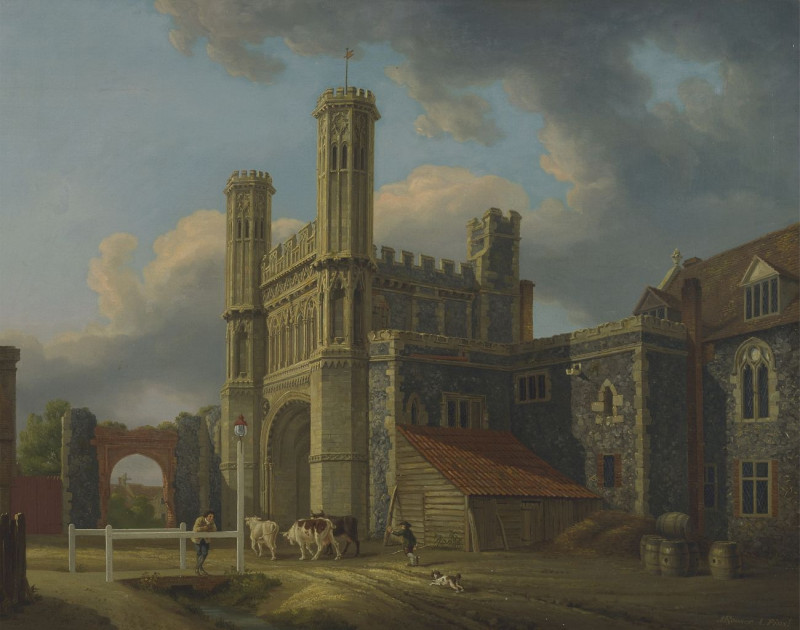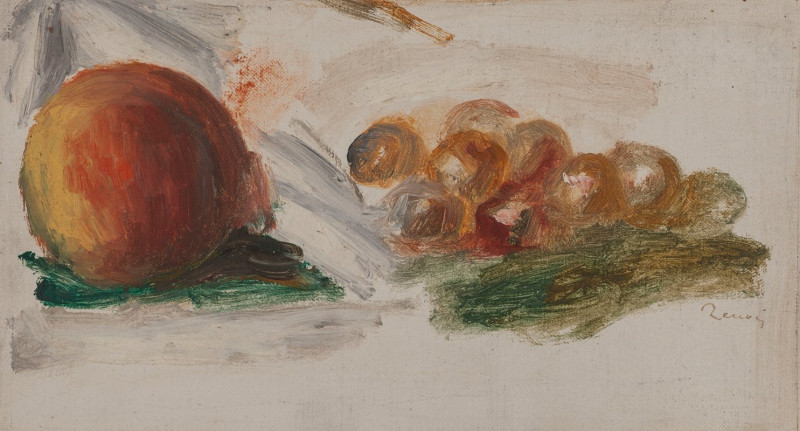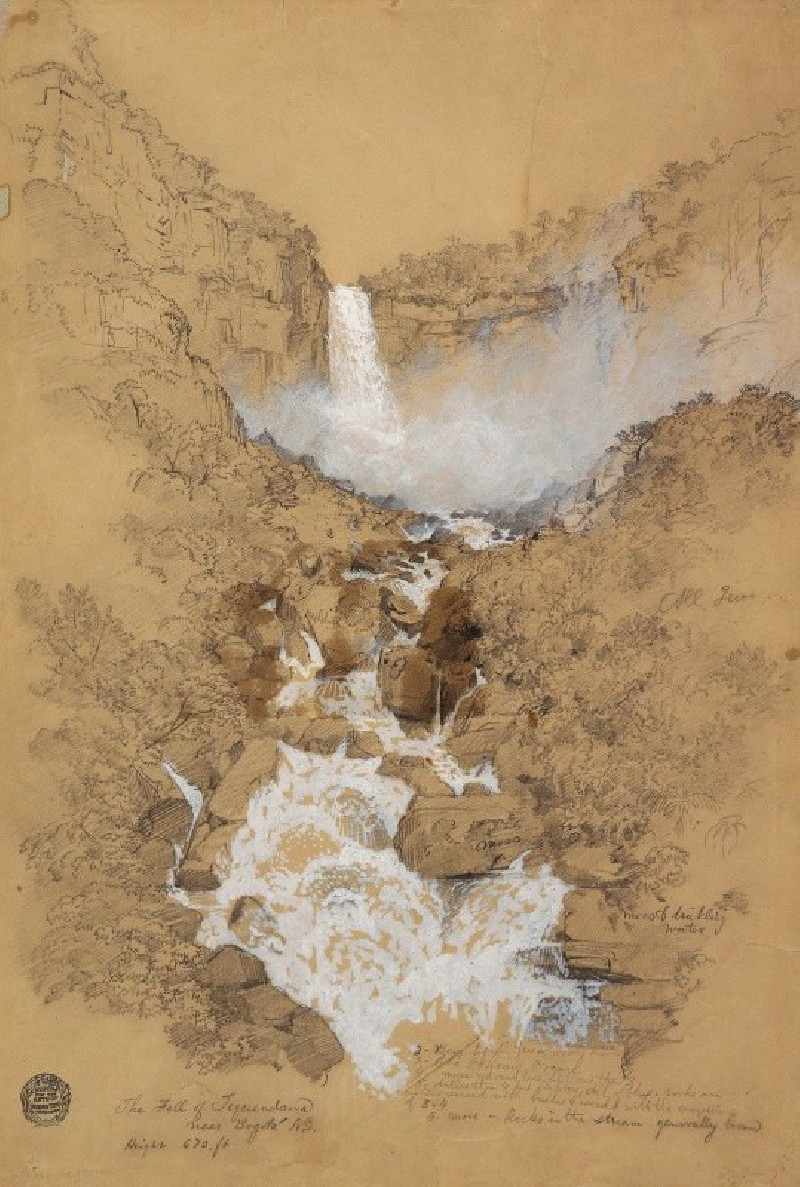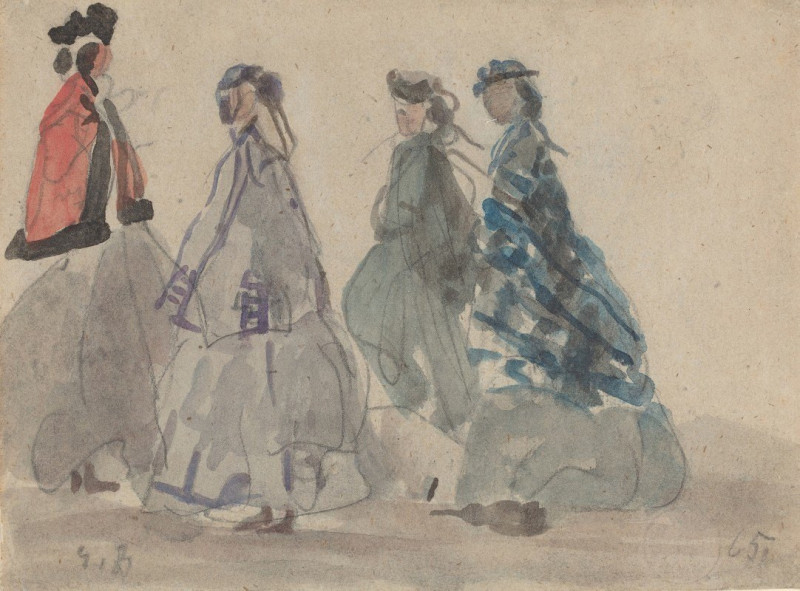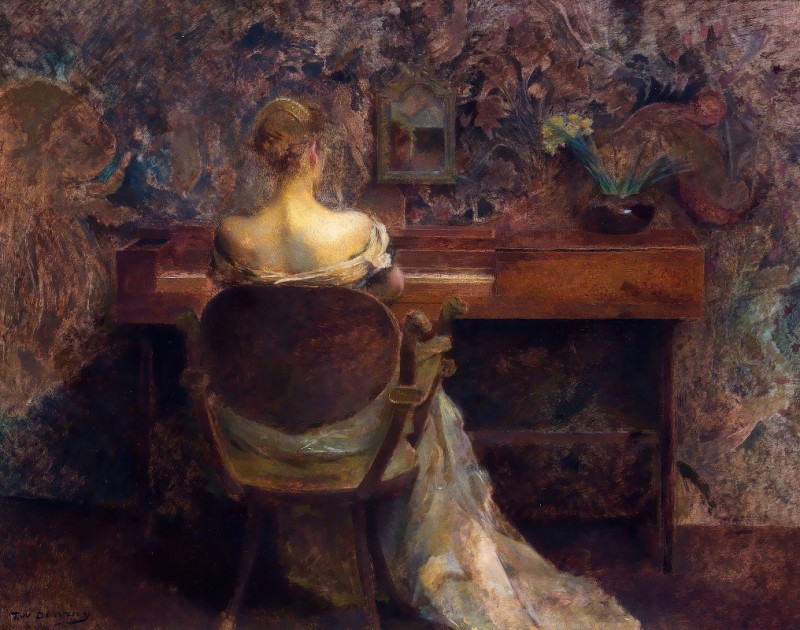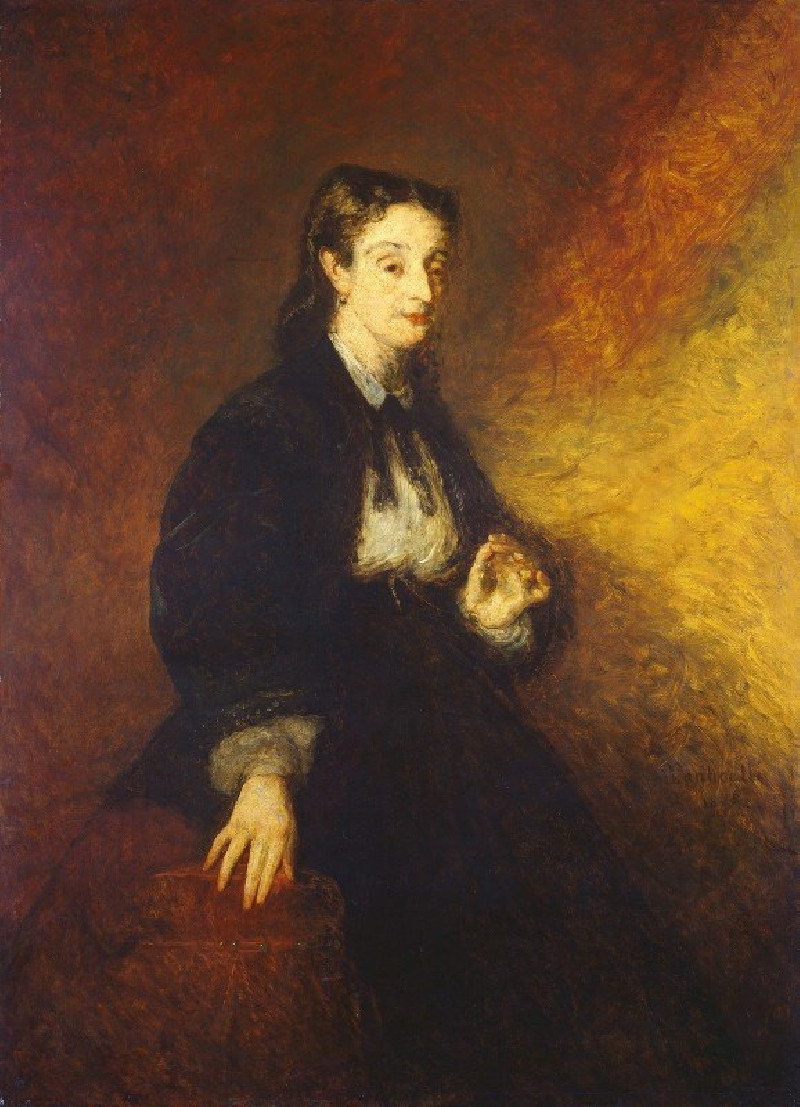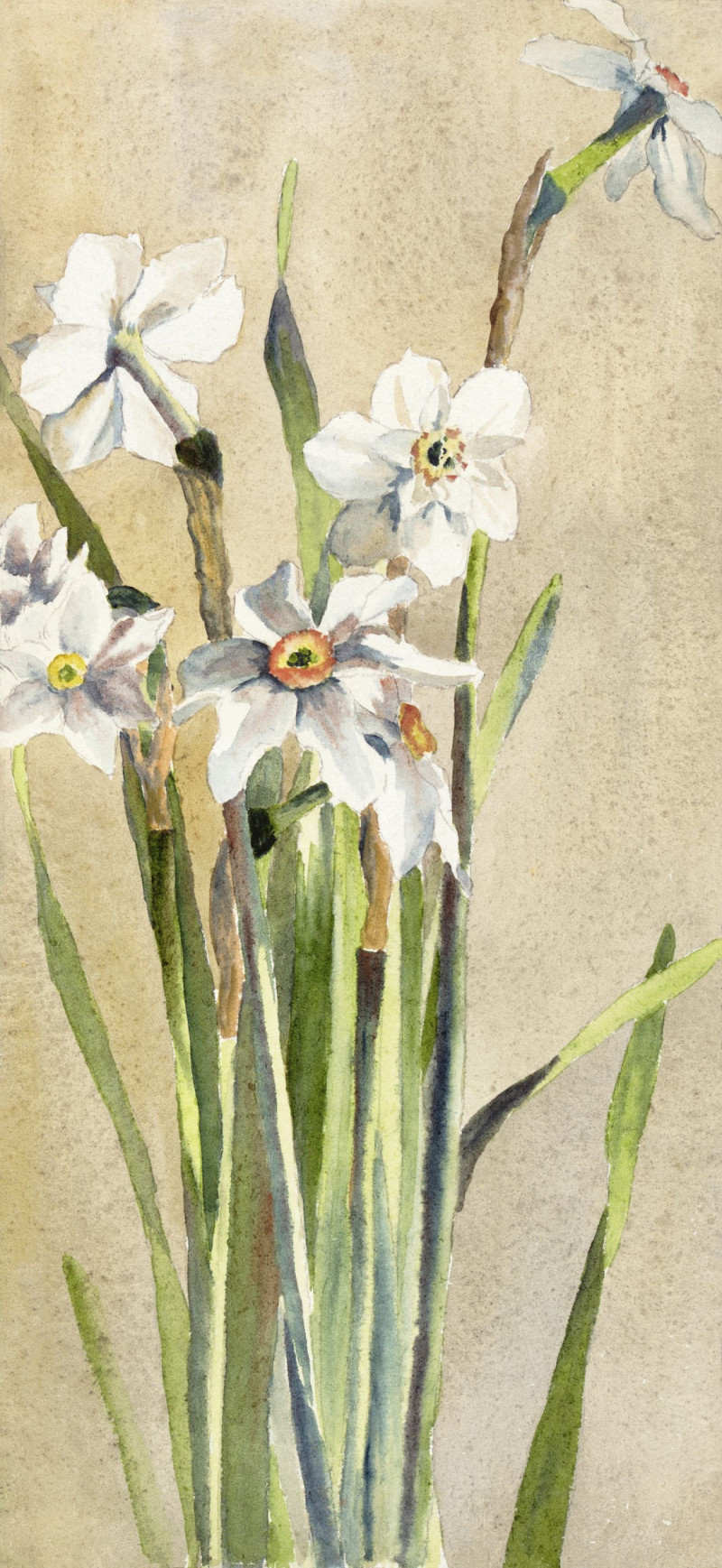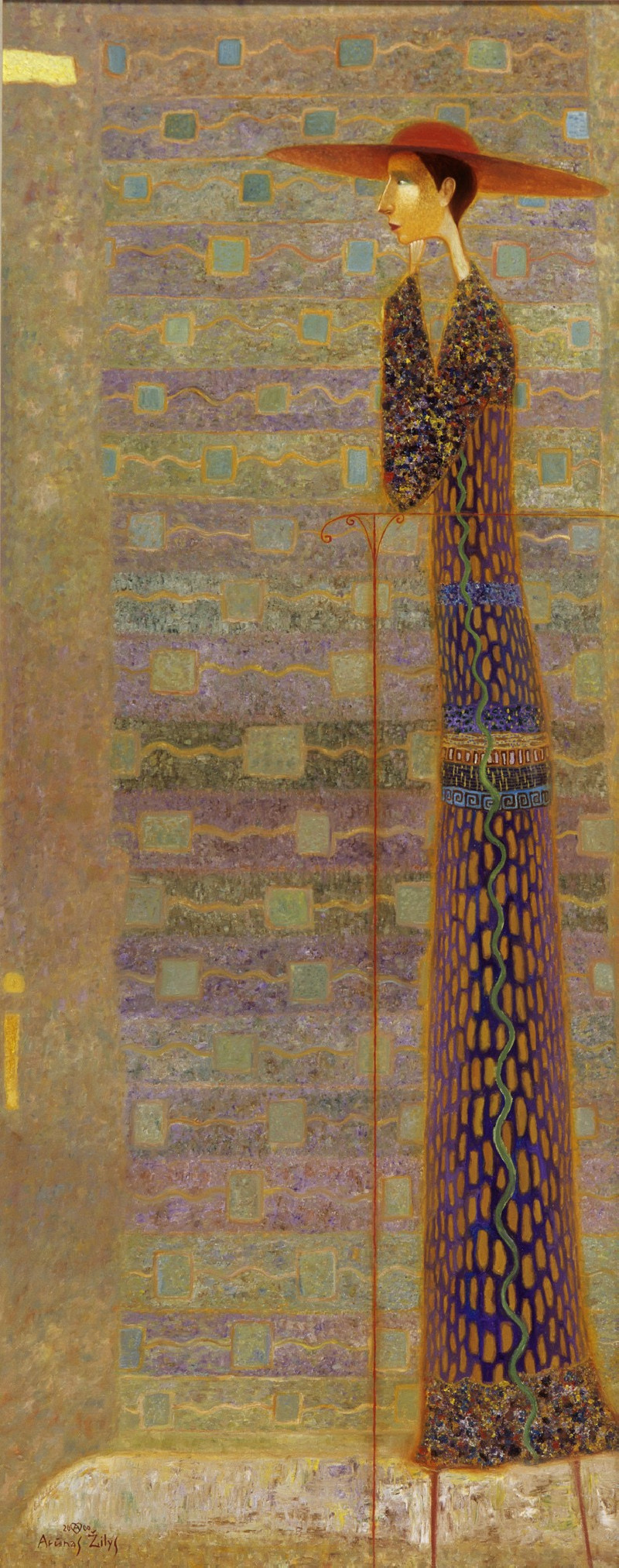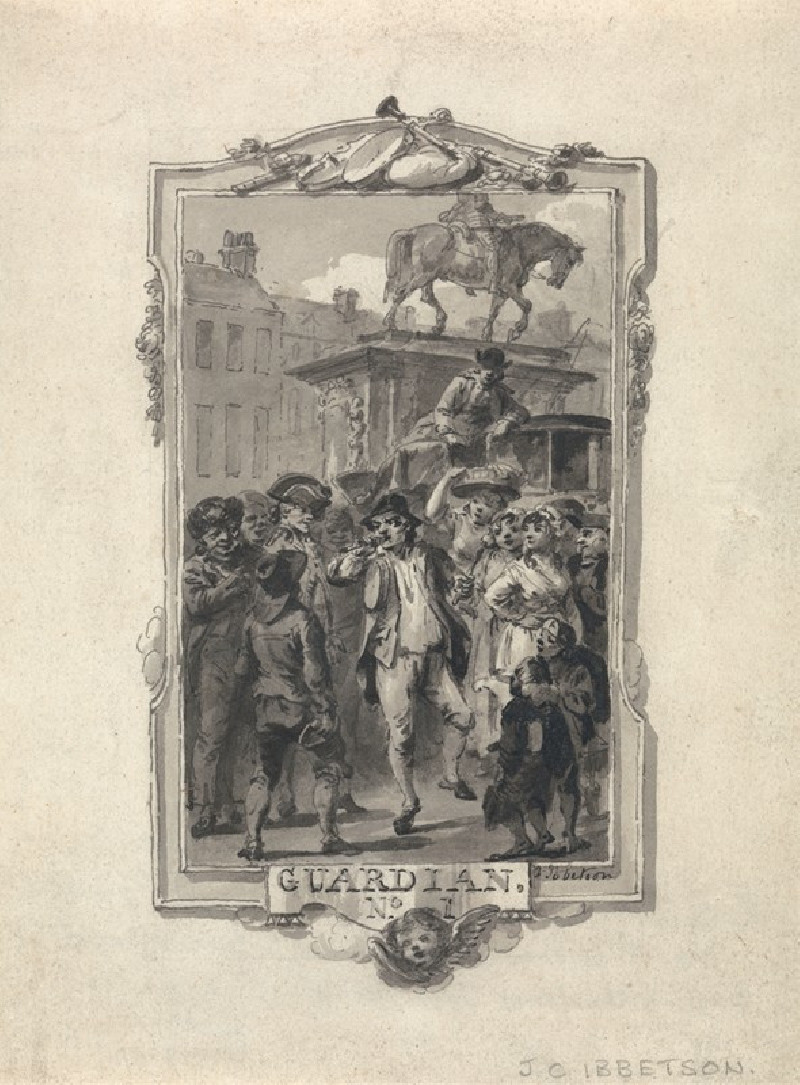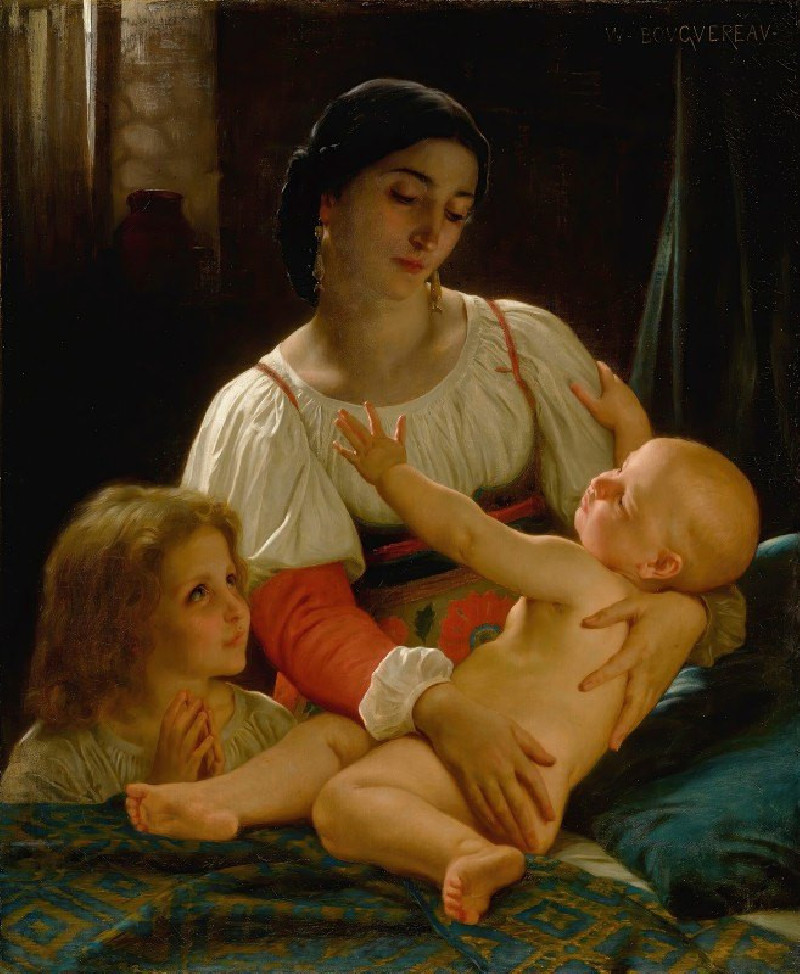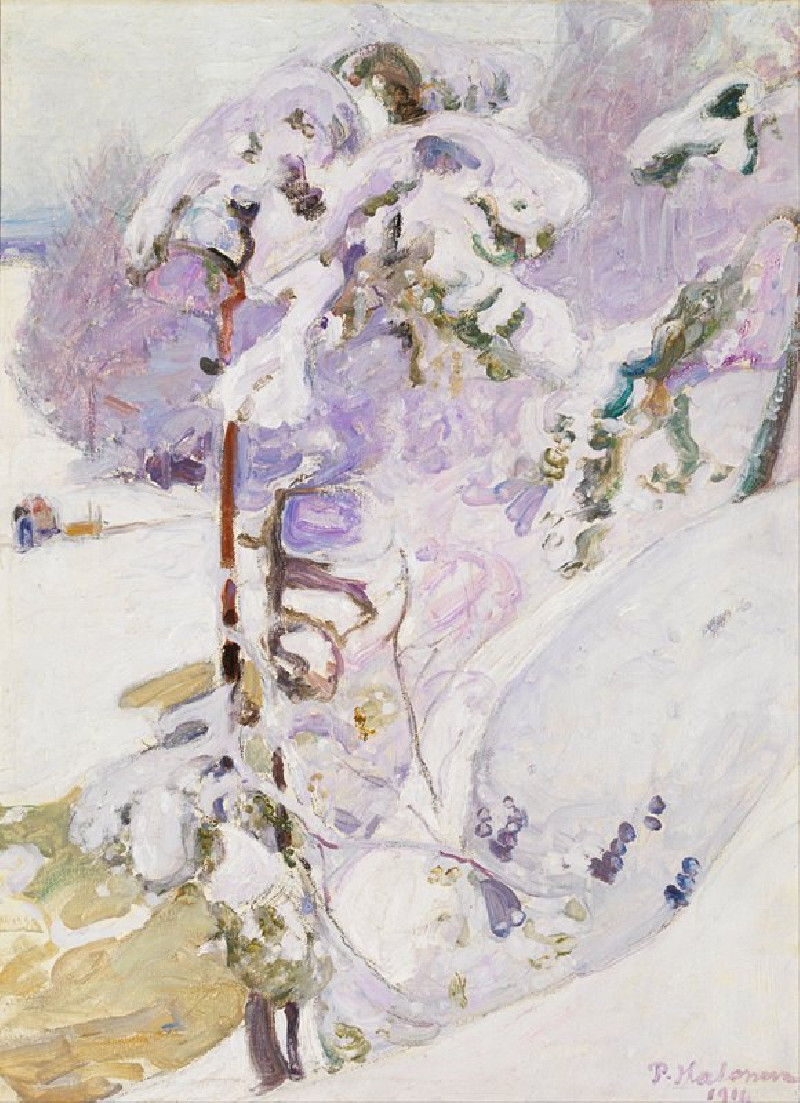Madame Mette Gauguin in Evening Dress (1884)
Technique: Giclée quality print
Recommended by our customers
More about this artwork
In this striking portrait from 1884 by Paul Gauguin, "Madame Mette Gauguin in Evening Dress," we see a captivating study of the artist’s wife, Mette-Sophie Gad. The painting is imbued with Gauguin's unique style that combines elements of Impressionism with the seeds of his future Post-Impressionist endeavors.Mette, adorned in an elegant evening gown, is seated against a muted backdrop, her attire rendered in soft pinks and yellows that suggest refinement and grace. Her thoughtful pose, with her head turned away to gaze into the distance, evokes a sense of introspective tranquility. This orientation allows us to contemplate her internal world, possibly reflecting on the evening ahead or lost in a quiet moment of personal reflection.A noteworthy detail is the oval mirror behind her, framed ornately but reflecting only a blurred image, perhaps symbolizing the complexity of personal and social identity during the period. To her side, a tapering column with floral decorations adds a classical touch, enhancing the air of dignified elegance.Gauguin’s technique here exhibits his departure from strict realism—notice the brush strokes that blend the colors gently into each other, focusing on emotional impression rather than detailed accuracy. This method not only adds a dreamlike quality to the scene but also focuses our attention on the emotional rather than narrative aspect of the portrait."Madame Mette Gauguin in Evening Dress" is not just a representation of Gauguin's wife but a nuanced composition that speaks to the themes of identity, reflection, and the inner life of the individual.
Delivery
Returns
Eugène Henri Paul Gauguin was a French Post-Impressionist artist. Unappreciated until after his death, Gauguin is now recognized for his experimental use of color and Synthetist style that were distinct from Impressionism. Toward the end of his life, he spent ten years in French Polynesia. The paintings from this time depict people or landscapes from that region.

